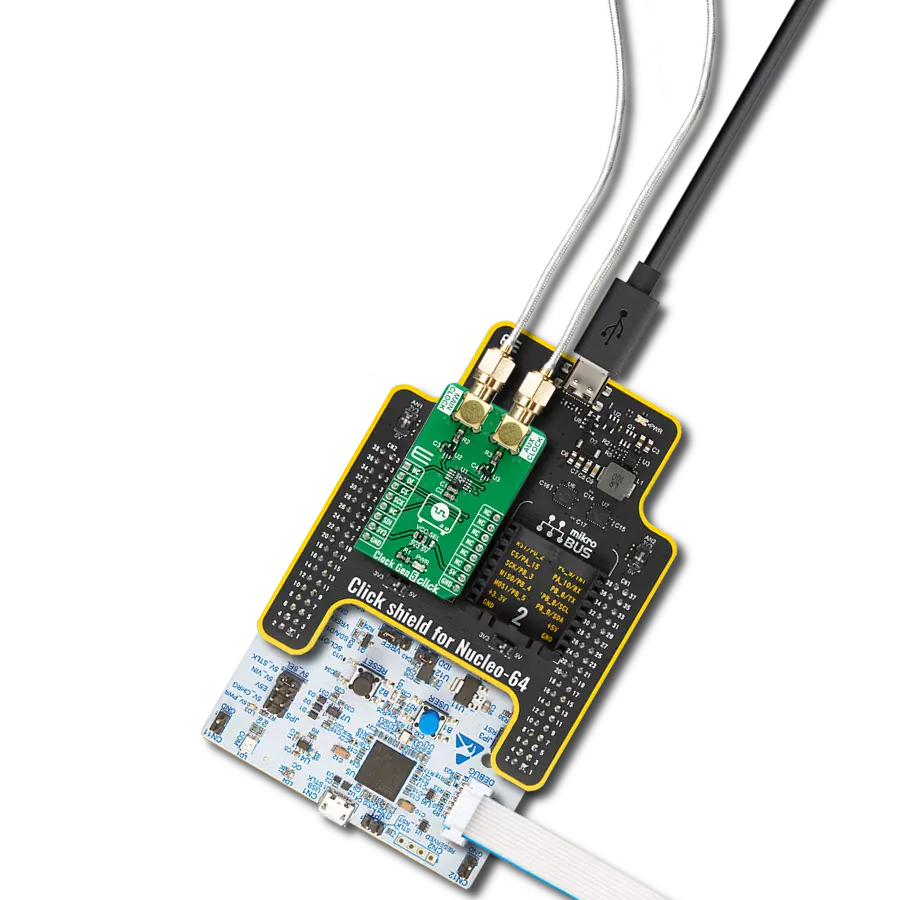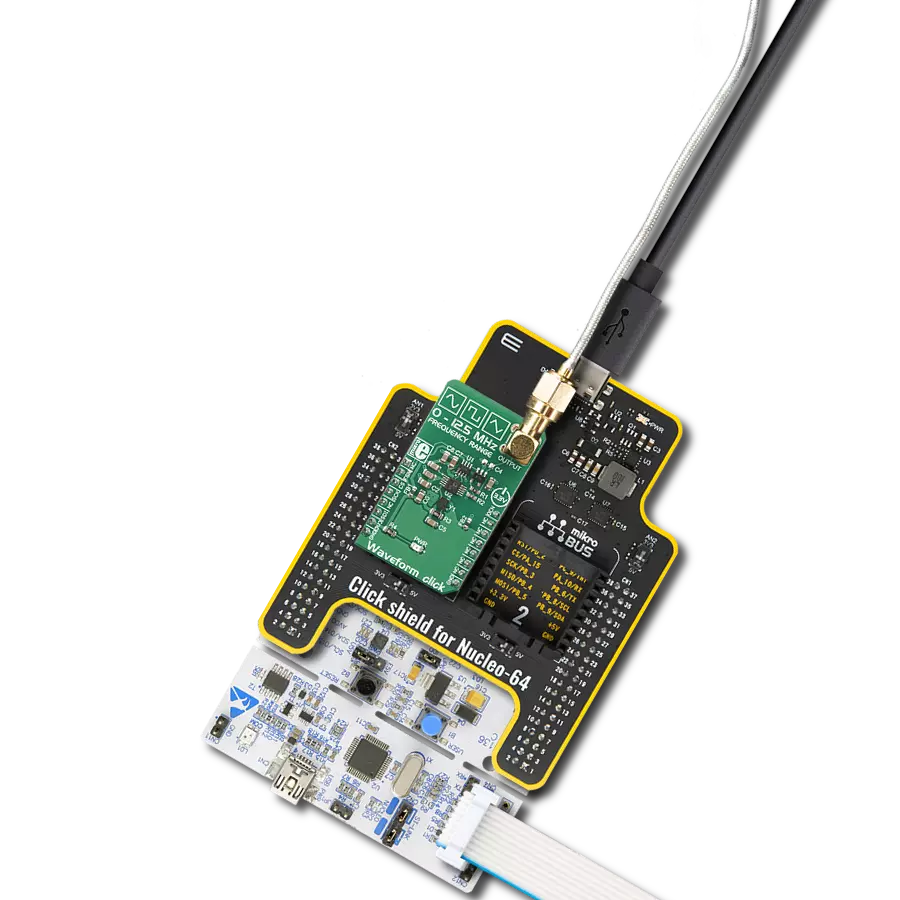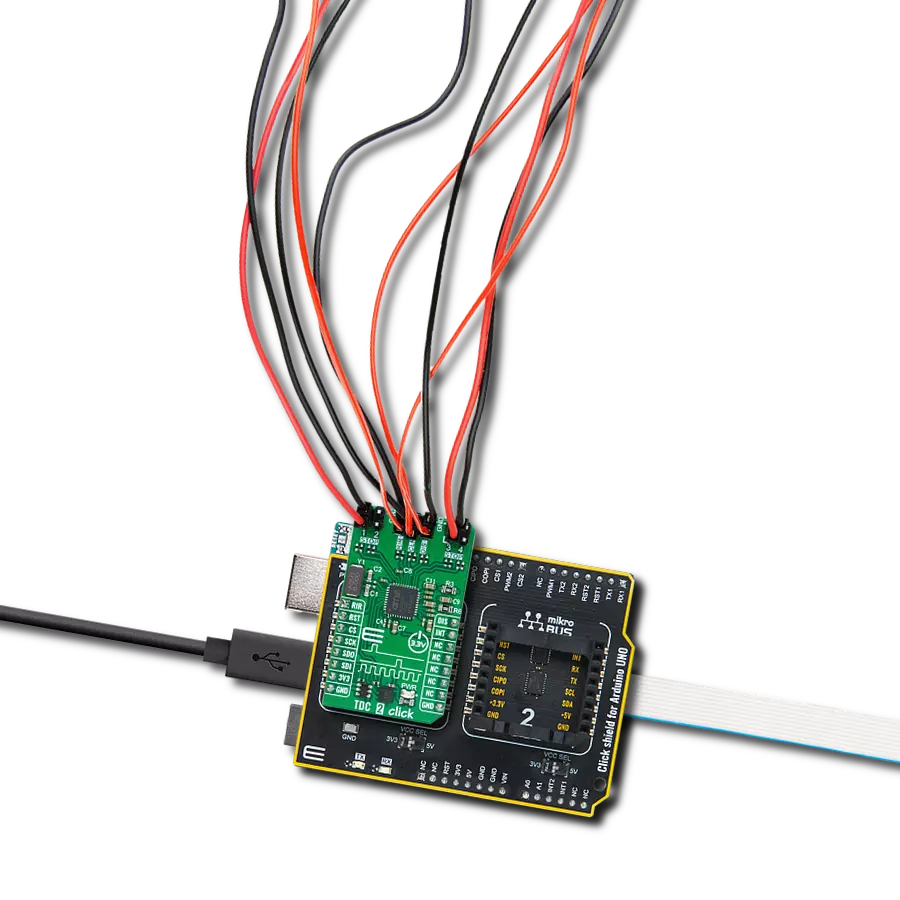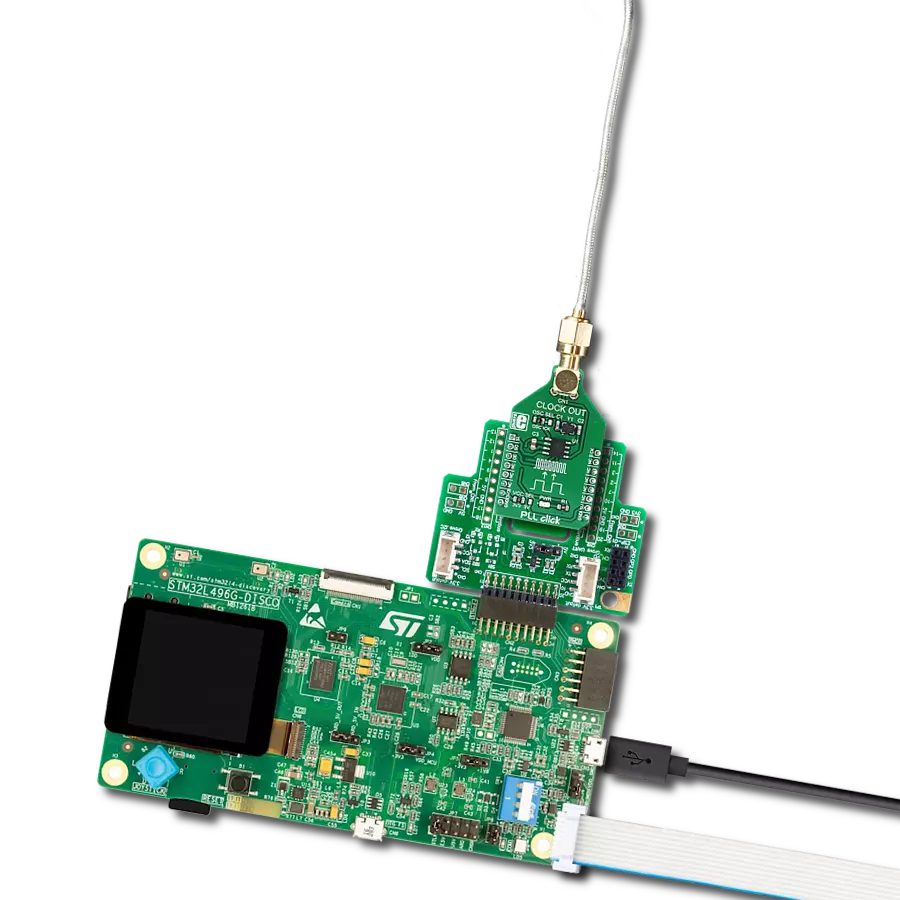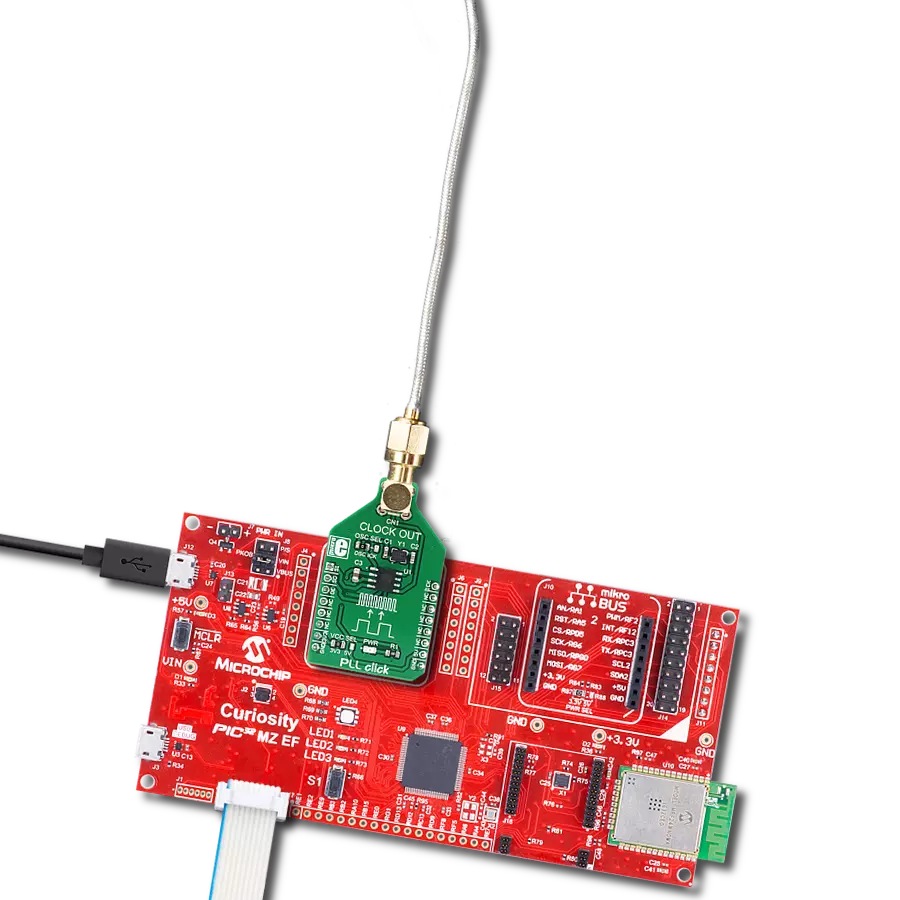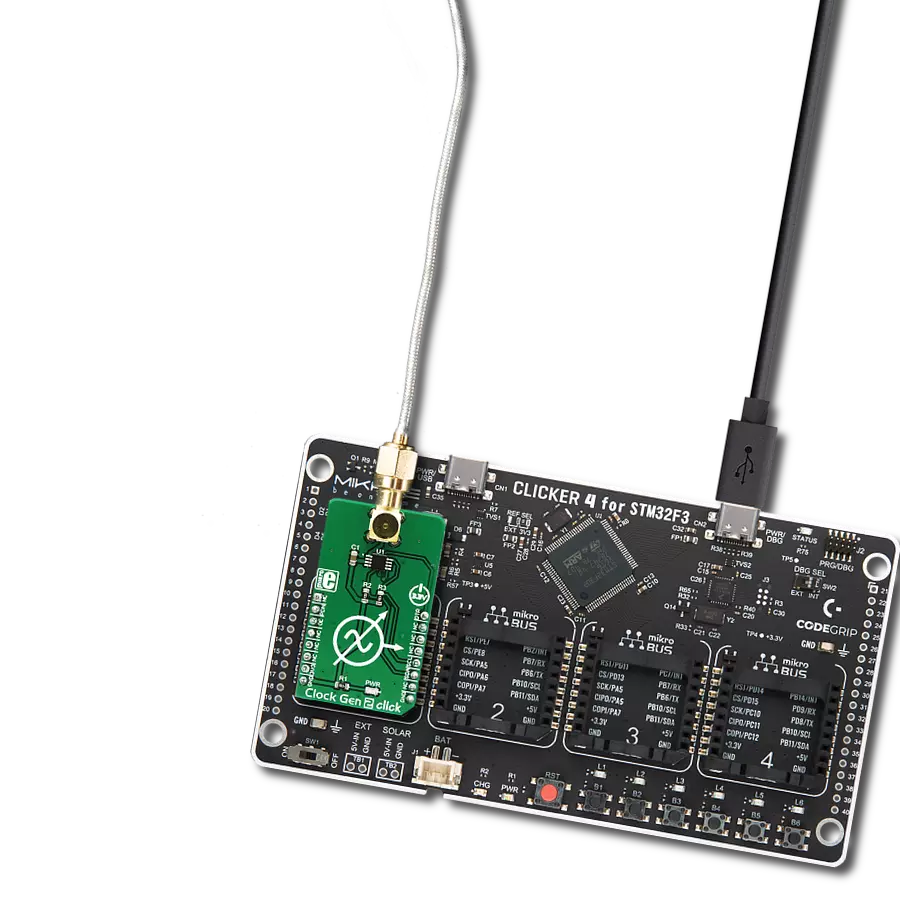Achieve unparalleled accuracy in time-of-flight and flow meter applications, particularly in zero and low flow measurements
A
A
Hardware Overview
How does it work?
TDC Click is based on the TDC7200, a time-to-digital converter for time-of-flight (ToF) applications for LIDAR and ultrasonic from Texas Instruments. This stopwatch IC measures the time between a single event known as time-of-flight (an edge on START signal) and multiple subsequent events (an edge on STOP signal), which are brought to the onboard SMA connectors marked as START and STOP. The user also can pair this Click board™ with some external board that contains the TDC1000 (ultrasonic analog front-end) and become a part of a complete ultrasonic sensing solution for measurements such as water, gas, and heat flow meter. The TDC7200 has an internal self-calibrated time base compensating for drift over time and temperature used to measure time accurately in the order of picoseconds. When placed in the Autonomous Multi-Cycle
Averaging mode of operation, the TDC7200 can be optimized for low system power consumption. The host can sleep to save power, and the TDC can wake it up upon completion of the measurement sequence. The TDC7200 also has an external reference clock to calibrate the internal time base accurately. All digital circuits inside the device also use this reference clock; thus, the clock must be available and stable when the device is enabled. For this reason, there is the possibility of selecting an external clock connected to a miniature coaxial N.FL series connector or an internal one by an onboard 8MHz crystal that can be activated via an OEN pin routed on the AN pin of the mikroBUS™ socket. Selection can be performed by onboard SMD jumper labeled as CLK SEL to an appropriate position marked as EXT and INT.
The TDC7200 communicates with MCU using the standard SPI serial interface with a maximum frequency of 20MHz. In addition, it also uses several additional GPIO pins, such as the EN pin routed on the RST pin of the mikroBUS™ socket used as a reset to all digital circuits in the TDC7200, the TRG pin routed on the PWM pin of the mikroBUS™ socket as a start measurement trigger and INT pin which determine TDC measurement completion. This Click board™ can only be operated with a 3.3V logic voltage level. The board must perform appropriate logic voltage level conversion before using MCUs with different logic levels. However, the Click board™ comes equipped with a library containing functions and an example code that can be used as a reference for further development.
Features overview
Development board
UNI-DS v8 is a development board specially designed for the needs of rapid development of embedded applications. It supports a wide range of microcontrollers, such as different STM32, Kinetis, TIVA, CEC, MSP, PIC, dsPIC, PIC32, and AVR MCUs regardless of their number of pins, and a broad set of unique functions, such as the first-ever embedded debugger/programmer over WiFi. The development board is well organized and designed so that the end-user has all the necessary elements, such as switches, buttons, indicators, connectors, and others, in one place. Thanks to innovative manufacturing technology, UNI-DS v8 provides a fluid and immersive working experience, allowing access anywhere and under any
circumstances at any time. Each part of the UNI-DS v8 development board contains the components necessary for the most efficient operation of the same board. An advanced integrated CODEGRIP programmer/debugger module offers many valuable programming/debugging options, including support for JTAG, SWD, and SWO Trace (Single Wire Output)), and seamless integration with the Mikroe software environment. Besides, it also includes a clean and regulated power supply module for the development board. It can use a wide range of external power sources, including a battery, an external 12V power supply, and a power source via the USB Type-C (USB-C) connector. Communication options such as USB-UART, USB
HOST/DEVICE, CAN (on the MCU card, if supported), and Ethernet is also included. In addition, it also has the well-established mikroBUS™ standard, a standardized socket for the MCU card (SiBRAIN standard), and two display options for the TFT board line of products and character-based LCD. UNI-DS v8 is an integral part of the Mikroe ecosystem for rapid development. Natively supported by Mikroe software tools, it covers many aspects of prototyping and development thanks to a considerable number of different Click boards™ (over a thousand boards), the number of which is growing every day.
Microcontroller Overview
MCU Card / MCU
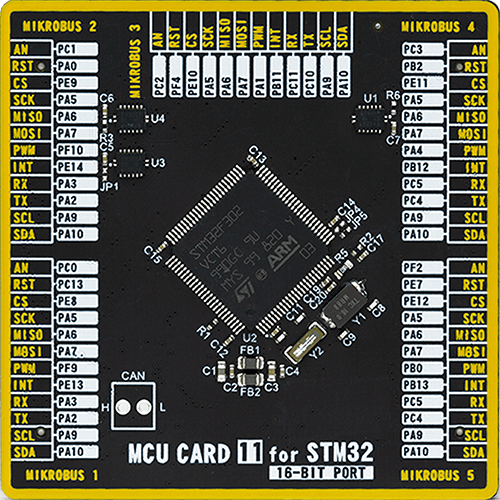
Type
8th Generation
Architecture
ARM Cortex-M4
MCU Memory (KB)
256
Silicon Vendor
STMicroelectronics
Pin count
100
RAM (Bytes)
40960
Used MCU Pins
mikroBUS™ mapper
Take a closer look
Click board™ Schematic

Step by step
Project assembly
Software Support
Library Description
This library contains API for TDC Click driver.
Key functions:
tdc_cfg_setup- Config Object Initialization function.tdc_init- Initialization function.tdc_default_cfg- Click Default Configuration function.
Open Source
Code example
The complete application code and a ready-to-use project are available through the NECTO Studio Package Manager for direct installation in the NECTO Studio. The application code can also be found on the MIKROE GitHub account.
/*!
* @file main.c
* @brief Tdc Click example
*
* # Description
* This library contains an API for the TDC Click driver.
* This demo application shows the use of a TDC Click board™.
*
* The demo application is composed of two sections :
*
* ## Application Init
* Initialization of SPI module and log UART.
* After driver initialization, the app set default settings and
* the configures the measurement ( set the pulse to 100 us ).
*
* ## Application Task
* This is an example that shows the use of a TDC Click board™.
* In this example, after the START signal, the app sends 3 STOP signals per 100 microseconds.
* The application reads and displays the value of Time, Clock count and
* Time-of-Flight values of three performed measurements.
* Results are being sent to the Usart Terminal where you can track their changes.
*
* @author Nenad Filipovic
*
*/
#include "board.h"
#include "log.h"
#include "tdc.h"
static tdc_t tdc;
static tdc_t tdc_pulse;
static log_t logger;
static uint16_t pulse_us;
static uint8_t count_stop;
static uint8_t num_stops;
void application_init ( void )
{
log_cfg_t log_cfg; /**< Logger config object. */
tdc_cfg_t tdc_cfg; /**< Click config object. */
tdc_cfg_t tdc_cfg1;
static uint8_t cal_periods;
static uint8_t avg_cycles;
static uint8_t sel_mode;
/**
* Logger initialization.
* Default baud rate: 115200
* Default log level: LOG_LEVEL_DEBUG
* @note If USB_UART_RX and USB_UART_TX
* are defined as HAL_PIN_NC, you will
* need to define them manually for log to work.
* See @b LOG_MAP_USB_UART macro definition for detailed explanation.
*/
LOG_MAP_USB_UART( log_cfg );
log_init( &logger, &log_cfg );
log_info( &logger, " Application Init " );
// Click initialization.
tdc_cfg_setup( &tdc_cfg );
TDC_MAP_MIKROBUS( tdc_cfg, MIKROBUS_1 );
tdc_cfg_setup( &tdc_cfg1 );
TDC_MAP_MIKROBUS( tdc_cfg1, MIKROBUS_2 );
err_t init_flag = tdc_init( &tdc, &tdc_cfg );
init_flag |= tdc_init( &tdc_pulse, &tdc_cfg1 );
if ( SPI_MASTER_ERROR == init_flag )
{
log_error( &logger, " Application Init Error. " );
log_info( &logger, " Please, run program again... " );
for ( ; ; );
}
tdc_default_cfg ( &tdc );
log_info( &logger, " Application Task " );
Delay_ms ( 100 );
cal_periods = 10;
avg_cycles = 1;
num_stops = 3;
sel_mode = 1;
pulse_us = 100;
count_stop = 1;
tdc_setup_measurement( &tdc, cal_periods, avg_cycles, num_stops, sel_mode );
log_printf( &logger, "---------------------------\r\n" );
Delay_ms ( 100 );
}
void application_task ( void )
{
static uint32_t p_time[ 5 ];
static uint32_t p_clock_count[ 5 ];
static uint32_t p_tof[ 5 ];
tdc_start_measurement( &tdc );
while ( tdc_get_trg( &tdc ) == 0 );
tdc_gen_pulse( &tdc_pulse, pulse_us, num_stops );
while ( tdc_get_interrupt( &tdc ) == 1 );
tdc_get_measurement( &tdc, TDC_MCU_CLOCK_MODE_168_MHZ, count_stop, p_time, p_clock_count, p_tof );
log_printf( &logger, " Time[ 0 ] = %lu\r\n", p_time[ 0 ] );
log_printf( &logger, " Time[ 1 ] = %lu\r\n", p_time[ 1 ] );
log_printf( &logger, " Time[ 2 ] = %lu\r\n", p_time[ 2 ] );
log_printf( &logger, "- - - - - - - - - - - - - -\r\n" );
log_printf( &logger, " Clock count[ 0 ] = %lu\r\n", p_clock_count[ 0 ] );
log_printf( &logger, " Clock count[ 1 ] = %lu\r\n", p_clock_count[ 1 ] );
log_printf( &logger, " Clock count[ 2 ] = %lu\r\n", p_clock_count[ 2 ] );
log_printf( &logger, "- - - - - - - - - - - - - -\r\n" );
log_printf( &logger, " TOF[ 0 ] = %u us\r\n", p_tof[ 0 ] );
log_printf( &logger, " TOF[ 1 ] = %u us\r\n", p_tof[ 1 ] );
log_printf( &logger, " TOF[ 2 ] = %u us\r\n", p_tof[ 2 ] );
log_printf( &logger, "---------------------------\r\n" );
Delay_ms ( 1000 );
}
int main ( void )
{
/* Do not remove this line or clock might not be set correctly. */
#ifdef PREINIT_SUPPORTED
preinit();
#endif
application_init( );
for ( ; ; )
{
application_task( );
}
return 0;
}
// ------------------------------------------------------------------------ END


















